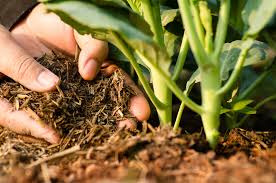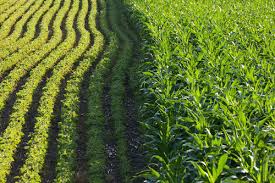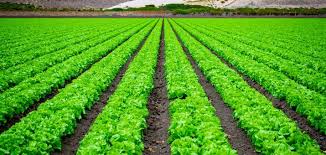Soil health refers to the ability of soil to function as a living ecosystem that supports plants, animals, and humans. Healthy soil is crucial for agriculture, as it provides essential nutrients, water, and a habitat for beneficial microorganisms. Understanding soil health involves recognizing the physical, chemical, and biological properties of soil that contribute to its vitality.
Key Components of Soil Health
1. Soil Structure: Healthy soil has good structure, allowing air and water to move freely. This promotes root growth and prevents erosion.
2. Nutrient Content: Essential nutrients, such as nitrogen, phosphorus, and potassium, are vital for plant growth. Healthy soil maintains a balanced nutrient profile.
3. Microbial Activity: Beneficial microorganisms in the soil help decompose organic matter, cycle nutrients, and suppress pests and diseases. A vibrant microbial community is a sign of healthy soil.
4. Organic Matter: Organic matter, such as decomposed plants and animal residues, improves soil fertility and structure. It enhances moisture retention and provides nutrients.
5. pH Level: The pH of soil affects nutrient availability. Most crops thrive in slightly acidic to neutral soils (pH 6.0-7.0).
Importance of Maintaining Soil Fertility

Maintaining soil fertility is essential for sustainable agriculture and food production. Here are several reasons why it is important:
1. Enhanced Crop Yields: Fertile soil provides crops with the nutrients they need to grow, leading to higher yields. Healthy soil supports robust root systems and overall plant health.
2. Sustainable Farming: Maintaining soil fertility ensures long-term agricultural productivity. Practices that preserve soil health reduce the need for chemical fertilizers, promoting sustainability.
3. Environmental Protection: Healthy soil helps filter water and prevent pollutants from entering waterways. It also plays a role in carbon sequestration, helping mitigate climate change.
4. Biodiversity Support: Fertile soils support diverse plant and animal life, contributing to a balanced ecosystem. This biodiversity is essential for pest control and pollination.
5. Economic Viability: Healthy soil reduces farming costs by minimizing the need for chemical inputs. Higher crop yields can lead to increased profitability for farmers.
6. Food Security: Maintaining soil fertility is vital for ensuring a stable food supply. Healthy soils can produce enough food to meet the needs of a growing population.
Read Also: How often you need to Change Water in your Fish Farm
Crop Rotation: A Sustainable Practice

Crop rotation is the practice of planting different crops in a specific sequence over several growing seasons. This sustainable agricultural practice offers numerous benefits for soil health and fertility.
1. Nutrient Management: Different crops have varying nutrient requirements. Rotating crops can prevent nutrient depletion and improve soil fertility by allowing different plants to utilize and replenish soil nutrients.
2. Pest and Disease Control: Crop rotation helps disrupt the life cycles of pests and diseases. By changing the type of crop grown in a particular area, farmers can reduce the buildup of harmful organisms in the soil.
3. Weed Suppression: Rotating crops can help suppress weed growth. Different crops compete with different weeds, making it harder for weeds to establish themselves.
4. Soil Structure Improvement: Growing a variety of crops with different root structures can enhance soil structure. Deep-rooted crops help break up compacted soil, improving aeration and water infiltration.
5. Increased Biodiversity: Crop rotation promotes biodiversity by introducing various plant species into the farming system. This diversity can enhance ecosystem resilience and improve overall soil health.
6. Reduced Chemical Dependency: By improving soil health and controlling pests naturally, crop rotation can reduce the need for chemical fertilizers and pesticides, leading to more sustainable farming practices.
Read Also: 14 Medicinal Health Benefits of Ghost Pepper (Capsicum Chinese)
Benefits of Cover Cropping

Cover cropping involves planting crops specifically to cover the soil rather than for harvest. These crops are usually grown during the off-season when the soil would otherwise be bare. Cover crops offer numerous benefits for soil health and sustainable agriculture.
1. Soil Erosion Prevention: Cover crops protect the soil from wind and water erosion. Their roots help bind the soil together, reducing the risk of erosion during heavy rains or strong winds.
2. Nutrient Management: Many cover crops, such as legumes, fix nitrogen in the soil, enhancing its fertility. This reduces the need for synthetic fertilizers, promoting a healthier soil ecosystem.
3. Weed Suppression: By covering the ground, these crops outcompete weeds for sunlight and nutrients, reducing the need for herbicides and manual weeding.
4. Soil Moisture Retention: Cover crops help retain moisture in the soil. Their root systems create channels that allow water to infiltrate, reducing runoff and promoting better water retention.
5. Enhanced Soil Structure: The roots of cover crops improve soil structure by creating spaces in the soil, which promotes aeration and drainage. This enhances the overall health of the soil.
6. Biodiversity Support: Growing a variety of cover crops promotes biodiversity in the soil ecosystem. This can lead to healthier soil microbiomes, improving nutrient cycling and disease resistance.
Composting: Enriching the Soil Naturally
Composting is the process of recycling organic matter, such as kitchen scraps and yard waste, into a valuable soil amendment. It enriches the soil and enhances its fertility and structure.
1. Nutrient-Rich Fertilizer: Compost provides essential nutrients, such as nitrogen, phosphorus, and potassium, in a slow-release form. This enhances soil fertility and supports healthy plant growth.
2. Improved Soil Structure: Compost improves soil texture by adding organic matter. This helps sandy soils retain moisture and nutrients while allowing clay soils to drain better.
3. Increased Microbial Activity: Compost introduces beneficial microorganisms into the soil, which help decompose organic matter and enhance nutrient cycling. This microbial activity is crucial for healthy soil.
4. Water Retention: Adding compost to soil improves its ability to retain moisture. This is especially beneficial in drought-prone areas, as it helps plants access water more efficiently.
5. Reduces Waste: Composting helps divert organic waste from landfills, reducing greenhouse gas emissions. This sustainable practice promotes environmental health.
6. Disease Suppression: Compost can help suppress soil-borne diseases by fostering beneficial microbes that outcompete harmful pathogens. This leads to healthier plants and reduced disease incidence.
Integrating Practices for Optimal Results
Combining cover cropping and composting can create a powerful synergy for improving soil health and fertility. Here’s how to integrate these practices effectively:
1. Sequence of Planting: After harvesting main crops, plant cover crops to protect the soil during the off-season. Incorporate compost before planting to enrich the soil.
2. Selecting Compatible Cover Crops: Choose cover crops that complement the composting process. For instance, legumes can be combined with compost to boost nitrogen levels.
3. Soil Testing: Conduct soil tests to determine nutrient levels and deficiencies. Use this information to tailor your compost and cover crop choices to meet specific soil needs.
4. Rotational Planning: Plan crop rotations that include cover crops followed by main crops that benefit from the nutrients released by compost. This creates a cycle of enrichment and soil health improvement.
5. Monitor Soil Health: Regularly assess soil health through visual inspections, soil tests, and plant growth assessments. Adjust your practices based on the results to maximize benefits.
6. Education and Resources: Stay informed about the latest research and techniques in cover cropping and composting. Join local farming groups or workshops to share experiences and learn from others.
Soil health is fundamental to sustainable agriculture, and maintaining soil fertility is crucial for food production and environmental protection. Practices like crop rotation play a vital role in enhancing soil health, supporting nutrient management, and promoting biodiversity. By prioritizing soil health, farmers can ensure a resilient agricultural system that meets the needs of current and future generations.
Do you have any questions, suggestions, or contributions? If so, please feel free to use the comment box below to share your thoughts. We also encourage you to kindly share this information with others who might benefit from it. Since we can’t reach everyone at once, we truly appreciate your help in spreading the word. Thank you so much for your support and for sharing!

